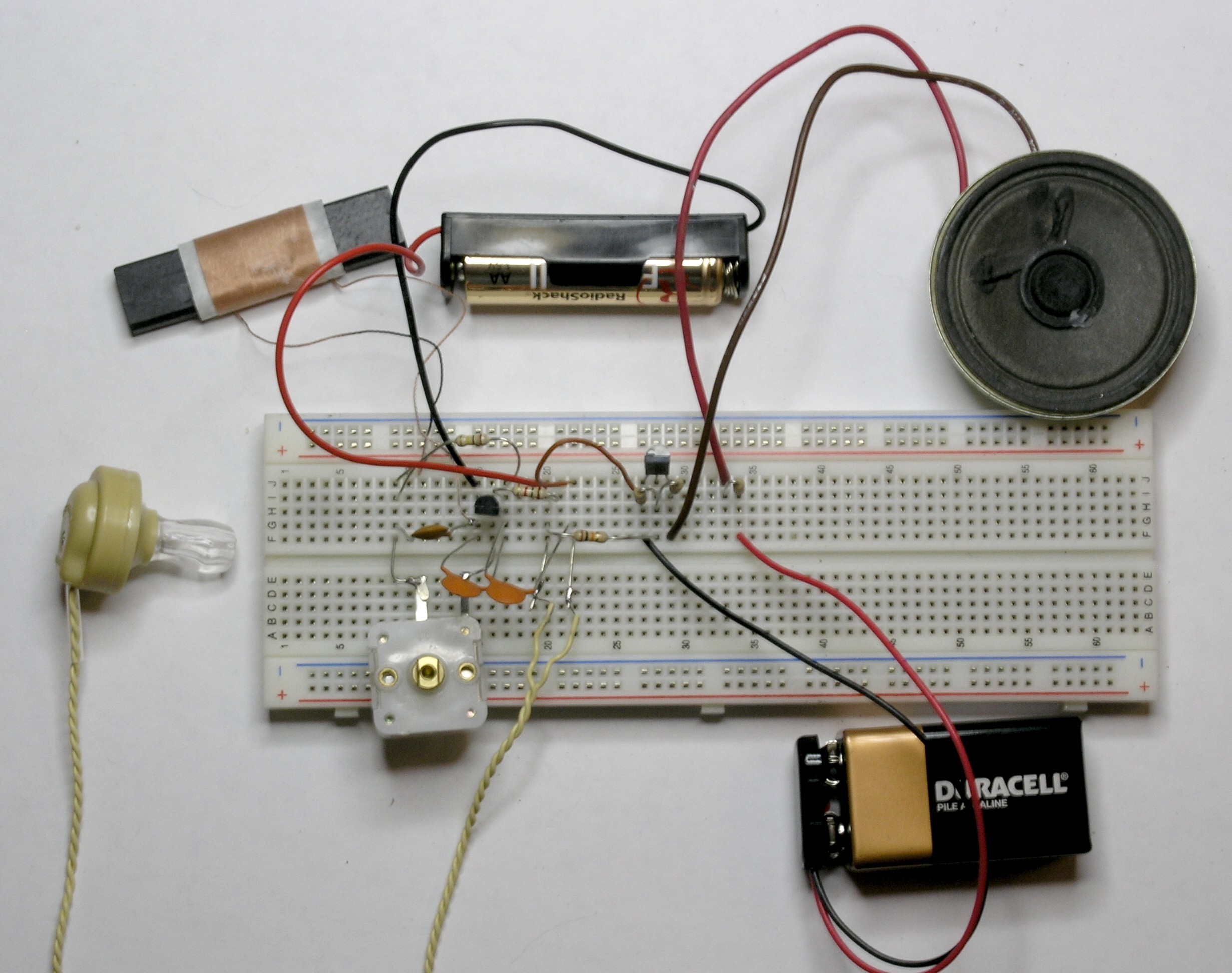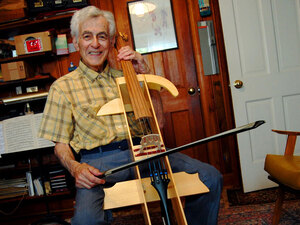About 30 years ago, I was in an airport somewhere with my cello, and a man came up to me and asked if I'd be interested in a cello you could fold up. As a matter of fact, I told him, I'd played on one once and hadn't liked it. Well, it turned out that that man was Ernest Nussbaum, the inventor of the one I'd tried, something called the Travielo. It was basically a fingerboard, strings, and bridge mounted onto a wooden frame, fitted with a pickup and primitive amplifier. The whole thing could be dismantled and put into a small wooden box within five minutes.
About a month ago, NPR did a story about Nussbaum and the current incarnation of this instrument, the Prakticello. It's similar to the one I played on all those years ago, but minus the electronics.
You can read about it/listen here:
Cello in a Box
Shortly after this story was broadcast, we decided to go on the trip to Maine that I mentioned last week, and that started me thinking about the possibility of acquiring a cello for travel. Although I am kind of a Luddite, I'm not a purist. I'm not against something that serves a useful purpose. My main interest is in portability, but in addition, if I ever get into playing more nonclassical music, the possibility for amplification would be nice.
Any cello can be electrified with a pickup and amplifier, but those designed to be electric have certain features that are appealing from a portability standpoint. Electric cellos are much smaller than traditional acoustic cellos because they don't have the large resonating body; they are generally just simple sticks, with a fingerboard and bridge on the front and electronics in the back. They incorporate various design elements that are either practical (to provide the traditional contact points -- chest, left hand, and knees) or aesthetic (cool-o rock band shapes and colors).
I've spent some time searching the Internet for information and opinions, but nothing beats actually holding the instrument in your hands, so I searched out some local options. First, I emailed the creator of the Prakticello, Ernest Nussbaum, and asked if I could arrange to try one out. He said he would have one available soon and promised to call me when it was ready.
Yesterday I made a trip to Chuck Levin's. They carry two brands: one made by NS Design and one made by Yamaha. Each has several variations to choose from. NS Design cellos are available in four-, five-, and six-string versions but with the same body design; Yamaha offers different body designs, all with four strings.
The salesman showed me a five-string NS Design cello and the most basic Yamaha model, SVC-50. I went in with high hopes for the NS Design cello: it's very attractive, made out of a solid piece of maple with a sort of folky look to it. Here's the five-string model:
It's designed so you can play it standing up, either on a heavy metal stand (which is included) or on a strap around your shoulders like a guitar, or sitting down. The stand can be adjusted for the seated position. There is also an optional endpin, but they didn't seem to have one in the store. My assessment, albeit based only on noodling on it for 10 minutes: nice sound, weird and uncomfortable playing position. The fingerboard feels very short, and the only stand-in for the shoulder on the left side of the cello that provides a reference point for shifting out of first position is a small metal nub on the back of the neck. I think it would be hard to go back and forth between this and my acoustic cello. There wasn't a four-string model for me to try, either, so I don't know if that might feel a little more natural. It's also heavy, especially with the stand.
The Yamaha model I tried is very plain. It looks kind of like a giant praying mantis.
But as you can see, the playing position is natural and the proportions of the instrument are the same as an acoustic cello. I liked this instrument a lot -- its simplicity, its design, and its clean sound. It's also very lightweight, at about seven pounds. The knee contact piece just screws on, and it's easy to install and remove. Yamaha calls it a "silent" cello, but it actually has a pleasant, though soft, acoustic sound when not plugged in.
Ernest Nussbaum had called me Friday evening to tell me the cello was ready, so my husband and I went to his house this morning. He had the cello waiting for me in his study. I was able to pick it up and start playing it, with virtually no adjustment other than the one you normally would have for a different cello. It has a similar acoustic sound to the Yamaha, though perhaps more resonant.
Here's Nussbaum with his invention (photo from the NPR story):
Here's moi, from this morning:
This cello has the best portability of all of them. It doesn't have any built-in electrical components -- Nussbaum said he gave up on that when it became apparent that the main utility for this instrument was as a practice cello when traveling or when living in close quarters with other people whom you do not want to disturb. However, one could easily use a pickup and plug that into an amp, just like one of the electric designs.
And the amp is the rub: if you want to use one of these cellos for performing or rehearsing, you need an amplifier, and they are complicated and expensive. The cello may only weigh 7 pounds, but add a 22-pound amp and you're getting back up to the weight of an acoustic cello (though at least it's not all in one awkward, fragile package). I looked at some at the store yesterday, but they are in a different department than the band and orchestra instruments, and they didn't offer to let me play the cello with one. So although there was a big heavy amp in the room with the cellos, I wasn't able to find out how it would actually sound with something more like what I would want to buy. I did play the Yamaha for a minute with headphones, but I can't see myself using headphones much.
While we were at his house this morning, Nussbaum showed us an old Travielo he has, and he explained that he made the amplifier himself -- just a little thing, with no container -- because he couldn't find anything else that would work at the time. I didn't get a really close look at it, but I believe it was something along these lines:
 |
| Image from this site: http://sci-toys.com/scitoys/scitoys/computers/solderless/amplifier.html |
He claimed that one would need only 1 watt for most purposes for this instrument (something like what's in the picture here), but I wonder about that. I'm not planning on playing Flight of the Bumblebee with a heavy metal band any time soon, but I'm thinking at least a little more power than that might be necessary.
In any case, I've got a few things to think about here.





No comments:
Post a Comment